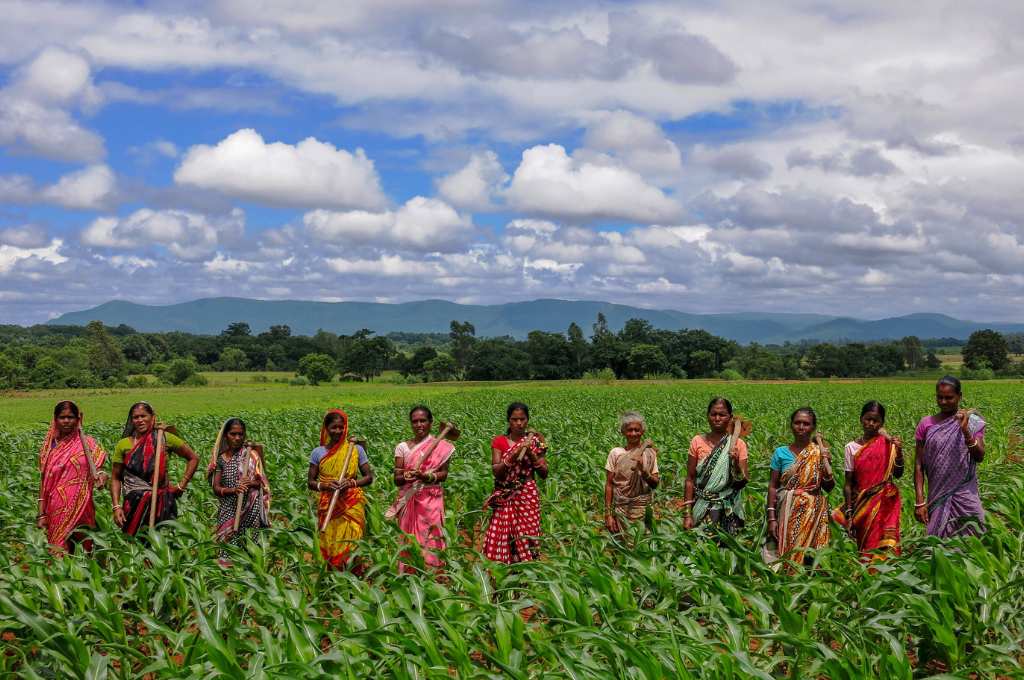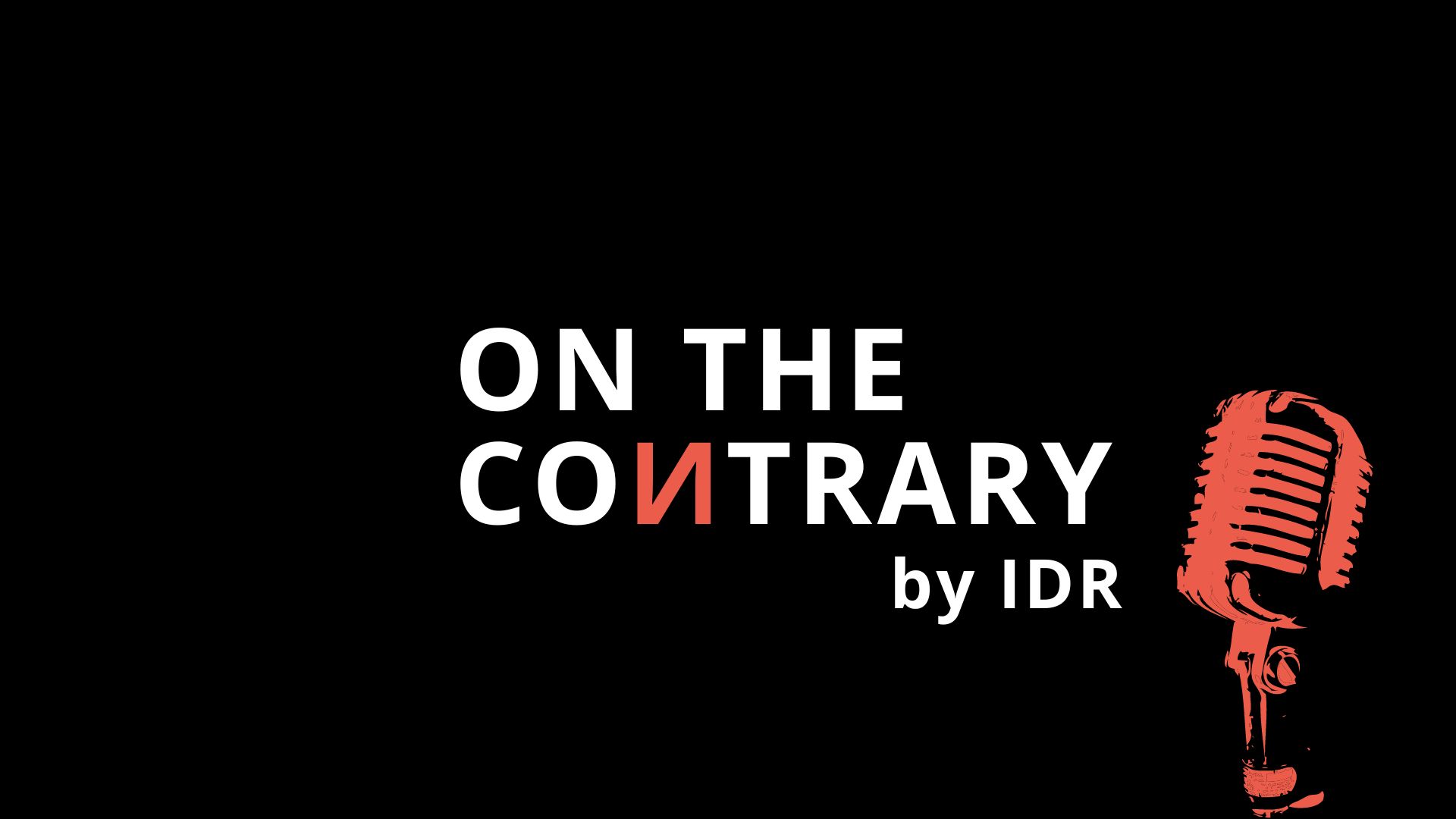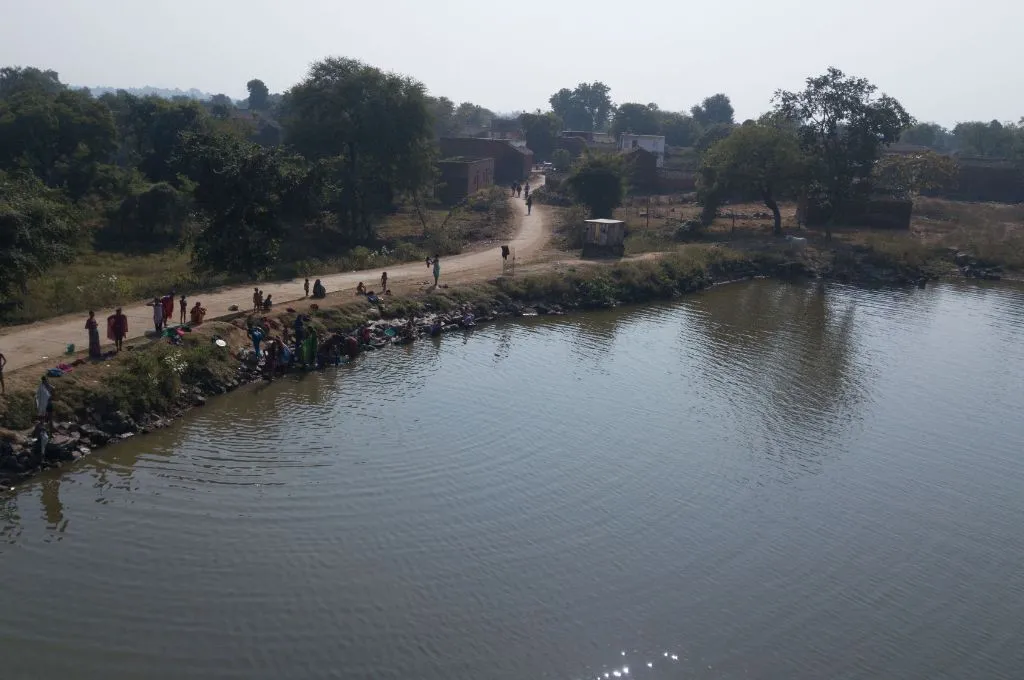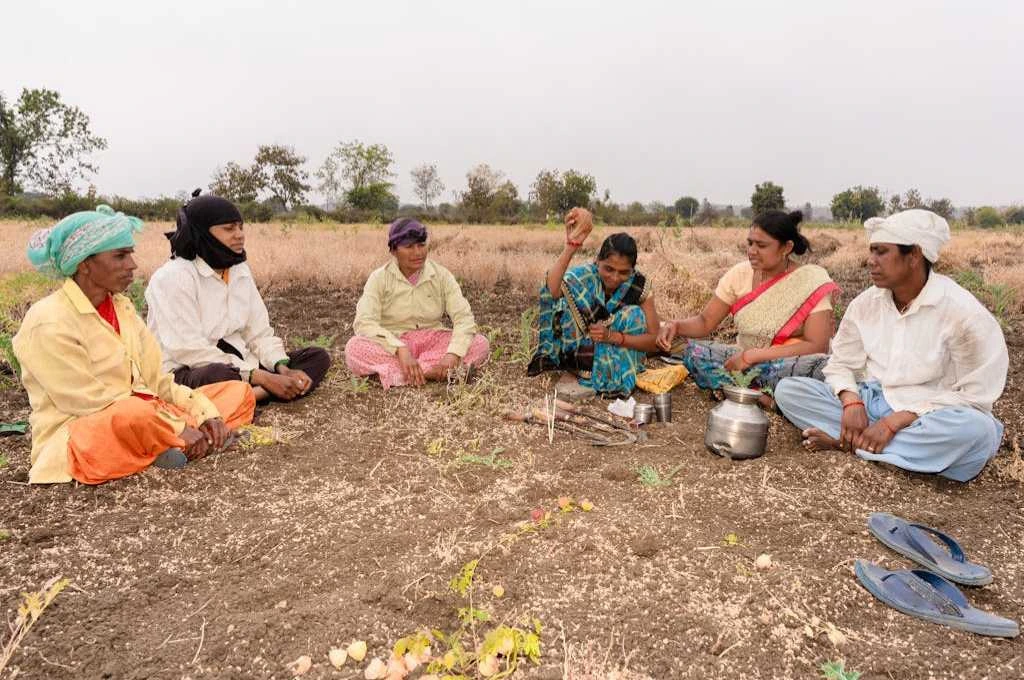Edited transcript of the episode:
0.53
Saloni: A good water conservation model catches on with the local community that needs it. A better one evolves from within a community and is nurtured and championed by collective action. Today we have with us two key stakeholders of water conservation discussing the significance of such an organic and joint effort. Uma Shankar Pandey is a grassroots activist from Bundelkhand, Uttar Pradesh. He was awarded the Padma Shri for mobilising his community to use a traditional water retention technique. It is because of his work that the water-stressed villages in Banda have turned water secure. And our second guest is corporate leader Shraman Jha. He is the CEO of Hindustan Unilever Foundation (HUF), which works with communities vulnerable to water stress and aims to make India water secure.
In today’s episode of On the Contrary by IDR, Shraman and Uma Shankar ji explore how community work and corporate action can intersect for the cause.
We start with Uma Shankar ji, who tells us about his journey as a jal yoddha (water warrior).
02.11
Uma Shankar: I was born in an extremely backward village named Jakhni [part of the Banda district in Uttar Pradesh]. Banda is one of the most backward districts of the country. At the time, the village didn’t used to have any roads, water, schools, transportation. So, my mother said to me that you need to do something for this village. And based on the condition of the village—poverty, starvation, migration…my mother believed that there is prosperity in water. The path to prosperity is through water. You save water and help farmers become prosperous.
Necessity is the mother of invention. Our village suffered from starvation, poverty, migration. 10 young boys like me were ready; we were from relatively better-off families. We took a risk. We started medhbandhi (boundary mound) with our own money. We brought basmati to a village like Bundelkhand where there was no water. The 10 of us cultivated it in 100 bigha of land and produced 500 quintals of basmati. Next time, we planted it in 500 bigha and produced 2,500 quintals. In the third year, we produced 10,000 quintals of basmati. We started this journey in Jakhni, where we produced double the amount of what we planted. If a person got 4,000 quintals of basmati, he would earn INR 25,000 from 1 bigha of land.
The water level in Bundelkhand has increased by 2 metres because of my attempt. This is according to a ground water department report. Water used to be transported to Chitrakoot through a water tanker using a single route; today they use a waterfall to grow paddy. Vegetables are being grown; migration has stopped.
03.52
Saloni: Uma Shankar ji comes from Jakhni village in Banda district, Uttar Pradesh. The area is prone to water scarcity, resulting in poverty and migration in the region. To change this, he shares how, with the help of a small group, he revived a traditional water retention technique. He showed communities in the region that they could alter their life and earnings with this simple practice. Villages that required water tankers are now sending out paddy from the area. This traditional technique is called medhbandhi. Uma Shankar ji explains…
Uma Shankar: We didn’t wait for anyone. We picked up our shovel and basket and collected the raindrops in our farmland. We created a medh (boundary mound) and planted small trees in the soil. A technique like medhbandi doesn’t require any training. It doesn’t require any tool. It doesn’t need technical knowledge. [We just need] baskets made of bamboo that our ancestors used, a shovel—for thousands of years, our shovels have looked the same—and our sickle and hoe. You go to your farm in the morning, place 50 baskets worth of soil on the boundary of your farm, and apply lemon, karaunda, amla. If you can’t apply any of these, then you instead apply yellow arhar lentil, shan or moong, or medicinal plants.
We cannot build a dam or dig a well or form a river by ourselves, but we can create a boundary mound on our own.
05.13
Saloni: As Uma Shankar ji tells us, medhbandhi involves raising the bunds around farmland. Farmers dig up soil with their shovels, carry it in bamboo baskets, and dump it on the boundaries. The bund is then secured against run-off with plants such as lemon, gooseberry, lentils. This arrangement is used to collect rainwater.
Shraman says this is a simple but powerful idea. It is easy to explain and replicate.
Shraman: The beauty of medhbandhi is in its simplicity. It’s not difficult to explain that a farm should have a boundary mound. And the second part of having a medh is that it should have trees. So, it is definitely under consideration because its beauty is in its simplicity and it is a tested model. It’s not an experiment, its results are in front of us. So, we would take it to such areas where its impact can be felt in terms of water conservation.
Saloni: Shraman adds that such community effort is urgently needed.
Shraman: I will take a step back and talk about why we’re conserving water. Everyone is discussing climate change today. But what do we call climate change in Hindi? Or how is it translated in any of the regional languages? It’s very accurate: jalvayu parivartan. So, we have to keep jal (water) in mind if we wish to fight climate change. And we should understand, from every angle, that the available water is not sufficient to fulfil our needs. This means [water availability] at the right time, in the right volume, at the right place. I’m saying this because in July/August of this year, you must have seen that many parts of North India were flooded. Water was everywhere, so how is it scarce? Because there’s no use of that water if it is not available in the right volume at the right place.
07.33
Saloni: As Shraman explains, India may get adequate rainfall but many communities are water stressed because they don’t get usable water at the right time and in the right quantity. Uma Shankar ji adds that erratic rainfall patterns are indeed a matter of concern.
Uma Shankar: The number of rainy days has reduced from 120 to 41. Monsoon days have reduced. There’s flood in July and no water in October. There’s no water in monsoon season. We have to come together, save water drops, plant trees, and wake up the community. Water conservation is a collective responsibility of 140 crore people. This is not a minor issue. It is the need of the hour and the future—water cannot be created, only saved. This is the time—the entire world is dealing with water insecurity. Groundwater is depleting. We have to make collective efforts to increase it.
Saloni: Community effort is key to conserving water, Uma Shankar ji says. Even traditionally, wells, ponds, stepwells were built and protected by community members.
Uma Shankar: Our techniques are practical. Techniques that have been used for centuries are still relevant. So, I think that saving water is the community’s job. The community used to build ponds, wells, and stepwells in our country and protect them as well. They wouldn’t get any funds for it. Trees were planted by the community. We’ll have to save those wells again. We’ll have to save village boundaries again because every river is created using a boundary. We’ll have to stop the water from running off from our farms to keep our rivers clean. Farm water should stay in the farm, village water in the village, forest water in the forest, and house water in the house.
[Medhbandhi] is known by my name but it is not mine, it is my ancestors’. My efforts of water conservation are equivalent to a drop in the ocean. But I didn’t just talk about the problems. I’ve tried giving solutions. The resources are of the farmer—their diya, their soil, their cotton, their mustard oil. I sat with them, they fed me, they handed me a shovel, they gave me a sickle, spread awareness in the village, and volunteered their labour with me—and the work of water conservation began.
A movement doesn’t start with money. The farmers and the common people of the country participated in this journey in huge numbers. And this participation was without any intervention from the government, nonprofits, or any office.
10.03
Saloni: Uma Shankar ji says that he has gained recognition for medhbandhi,but all the farmers in the villages he worked in contributed to it with resources and labour. They did not turn to the government or to nonprofit organisations. He says that saving water is the job of communities, just like it was in the past when they built and protected the ponds and wells in the villages.
Shraman goes on to add that the water crisis is not limited to just one person, one household, or one area. It takes different forms in different regions, and each region has to find the way that works best. The solutions have to come from within communities all over the country.
Shraman: Until and unless the society works together…Water scarcity is not an issue for just a single person. It’s not possible that we have sufficient water in our home but our neighbour is facing water scarcity. Water insecurity is a problem for an entire community in an area, and its solution can only be brought by the community. This issue cannot be resolved until we collectively work together. As Uma Shankar ji said, a pond didn’t belong to just one family, it was for the entire village. Or many villages would have one large pond. A pond with water is beneficial for everyone. A pond without water is a problem for everyone. So, this problem cannot be resolved unless everyone works together.
There are many areas where organisations and collectives are doing similar work. And HUF supports a lot of these. Maharashtra’s Marathwada is also a very drought-prone area. There are many tribal areas in central India that are hilly and mountainous where the water cannot be collected or the water is unable to get absorbed in the ground because the land is cracked. We work in many areas such as West Bengal and Uttar Pradesh and they all have their own stories. The uniqueness of geography and society makes every area special.
12.30
Saloni: This is true. Water is a community problem and can be solved only by and with the community. Ponds and lakes are part of the commons in a village. Shraman has seen that many collectives understand this and work together to combat water stress. This is critical because each area is geographically unique and the solution should be suited to the local environment.
This is why generational and traditional knowledge gains importance.
Uma Shankar ji recognises medbandhi as a practice passed down by his forefathers. We ask him about the role of such ancestral wisdom in water conservation.
Uma Shankar: Our ancestors had their own efficient traditional techniques of water conservation. They could create a pond, a well, or a reservoir even on top of a mountain.
We have to combine ancient knowledge and new knowledge. The ancestors’ knowledge can be used to bring water; for example, their knowledge can be used to figure out how to make a pond. But new knowledge will tell us how to take that water to our fields. We can save droplets of water through new techniques. Irrigation at night…and other new techniques that have been innovated. One kg of rice production used to require 3,000 kg water, but today scientists have brought it down to 1,500 kg. One litre of milk production required 1,000 litres of water. Scientists have brought it down to 500 litres. One kg of textile production required 1,000 litres of water. Scientists have brought it down to 1,000 kg.
15.47
Saloni: Uma Shankar ji believes that to conserve water in agriculture, traditional know-how has to be combined with the latest research and technology.
For example, raising bunds secured with plants may help farmers retain water, but drip irrigation will help take it to the farm and use it efficiently. Shraman agrees.
Shraman: Innovation doesn’t have to involve heavy science. Our traditional wisdom can be strengthened through modern technology. We have employed techniques such as remote sensing and GIS and we want new techniques to be adopted because it has the ability to reduce 30 days’ worth of work to perhaps a few minutes. So, we have to use modern technology in a way that strengthens traditional methods instead of standing in opposition to them. Because there’s a reason that traditional methods have existed for thousands of years.
Saloni: Modern technology can definitely be used to strengthen, bolster, and spread traditional practices. According to Uma Shankar ji, businesses can play a crucial role in supporting such grassroots efforts.
Uma Shankar: We alone cannot transform the world. But experimentation can be done in one place and applied to other places. If corporates are doing good work in India in this regard, then we should work with them—such organisations that wish to make an impact and consider it their responsibility that if we’re taking water, then we have to return it, if we’re taking the trees then we have to plant them. If we’re doing business, then it is our responsibility to return to the community in equal measure.
We have to bring awareness to the people. They don’t know that they need 3 litres of water in a single day. They don’t know that you only need 80,000 litres of water in a lifetime. Five hundred litres of water is wasted. We have to motivate them and tell them that this is an issue.
We have to inform students and farmers about water—take it to their classrooms and to the field.
We have to bring awareness to the country. We have 5,58,000 villages with 2.5 lakh gram panchayats. Eighty percent of the population lives in villages. People in villages use water cautiously, but cities misuse it. The young generation doesn’t know that the water they use to wash cars can be used in the fields. They don’t know how to recharge water. You live in the city; you can recharge water in your colonies. So, the young generation isn’t aware and we have to save water with the help of the foundation.
HUF should conduct classes related to water. We have to inform students and farmers about water—take it to their classrooms and to the field. Students are the future citizens of the country. Schools should include the subject of water in their syllabus. We should give them a two-page book about our traditional techniques to read and become water saviours.
18.52
Saloni: Uma Shankar ji appreciates businesses that understand that they have to give back to the communities from whom they take resources. He suggests that business houses help promote water literacy and numeracy. He recommends schools and learning centres to train children on water conservation. Shraman weighs in on the role corporate houses can play to spread awareness about the water crisis.
Shraman: We might not all be able to becomejal yoddhas or water warriors. Uma Shankar ji has dedicated his entire life to water. Each of us can be a jal dhoot or an ambassador for water. Corporates can support this in many ways. First, [corporates] have a huge employee base. The young generation is energetic and enthusiastic and wants to do something for the country. The problem is them being uninformed about how critical the water scarcity issue is. So corporate employees can use social media to make people in the villages aware about this problem and become ‘water messengers’. The reason I say villages specifically is because 80 percent of freshwater is consumed in rural areas and in agriculture, so the impact and difference will be felt here the most. Employees can start a movement using the community’s energy and enthusiasm, which can be extremely helpful.
Second, nowadays there’s a fashionable term being used among corporates called ESG goals. E for environmental, S for social, and G for governance. The corporates’ vision on how to achieve these are clear and can be found in their annual reports. But when we divide these goals and figure out what can we do for the environment as it has many aspects, we find that most of those aspects are somehow related to water. If we categorised them and created a target—mainly because corporates follow an old rule of ‘nothing happened if it wasn’t measured’—it can make a huge difference.
Third is figuring out how we can support the community and collective that is doing good work. And not just financially, but technically, or helping by connecting them to the right people. For instance, water warrior Uma Shankar ji is with us—we can take him to a collective that we know has the potential to make an impact but doesn’t know where to start. They can absorb his experience and learn what their first, second, and third step should be. Part of those steps would be other organisations and the government coming together to create an impact that will be easily visible.
22.12
Saloni: As Shraman says, business houses can provide not just financial and technological resources to communities but also help grassroots leaders connect with other stakeholders. But do corporates understand the urgency of the issue at hand? Shraman thinks they are getting there.
Shraman: The business world is beginning to understand the importance of water security. Companies that own factories are adopting water-efficient practices. They are creating products that consume less water. We’re starting to hear about water stewardship. The second aspect is a company’s social responsibility, popularly known as CSR (corporate social responsibility), which focuses on the impact that is created in society separate from the company’s factories or products. So, we’re seeing corporates discuss the need for saving every water droplet. We’re also in touch with other corporates to figure if we can do something together. Awareness is definitely increasing and it will keep improving, but it requires constant discussion. Water warriors that experiment and create a difference…their stories should be taken to the people so they understand how impact is created in society.
So, [the understanding is definitely present] in companies’ factories and operations in the form of CSR. All the large corporates and industrial bodies such as CIIs and FICCI are discussing it, so change can be seen.
Saloni: The good news is that awareness about water conservation is increasing among companies and other organisations. Shraman is right, the word of water warriors needs to be spread wider. Building on that positive note, we end with a story of hope and courage from Uma Shankar ji.
Uma Shankar: A forest was ablaze and all the animals, such as elephants and lions, were running to their safety. A little bird was trying to extinguish the fire by taking the water in its beak and pouring it over the fire. An elephant asked the bird, will the fire extinguish with the help of the water in your beak? And the bird gave a beautiful reply: Everything is chronicled in history. This forest fire will also be recorded in history. History will say that when the elephant, lion, and all the animals were running away, a bird was trying to put out the fire with the water in its beak. My name will be among the saviours, not among the runners.
25.11
Saloni: A forest is on fire and all the animals are running to safety. The elephants and lions are also running for their lives. An elephant sees a little bird who refuses to flee. She fills her beak with water and pours it over the raging fire. The elephant asks her: Sister, do you think what you are doing will make a difference? The bird replies: Someday, the history of this jungle fire will be written. In this story, I want to be known as someone who tried to stop the disaster and not as someone who ran away.
I would like to leave all our listeners with that thought. Thank you for tuning in.
—
Read more
- The business opportunity in water conservation
- Companies and water: The new social responsibility
- Corporations are pledging to be ‘water positive’. What does that mean?
- How to become a water warrior
- How community ownership sustains water conservation
- India’s looming water crisis–a call to action for companies
- Water conservation needs a community solution, not an engineering one





